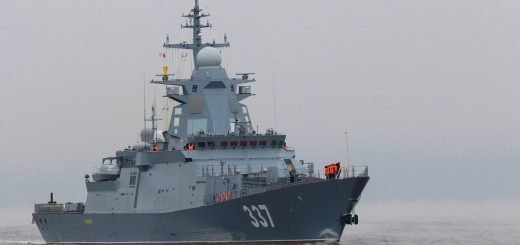Treaty of Portsmouth: How it shaped 20th-century Diplomacy in the East

September 5, 2019, marks the 114th anniversary of the infamous Treaty of Portsmouth. This treaty was formally signed between Imperial Japan and Imperial Russia to end the 1904–05 Russo-Japanese War.
It was signed on September 5, 1905, after negotiations lasting from August 6 to August 30, at the Portsmouth Naval Shipyard in Kittery, Maine, United States. U.S. President Theodore Roosevelt was instrumental in the negotiations and won the Nobel Peace Prize for his efforts.
Russo-Japanese War 1904-05 – A War between two imperials
In the 19th Century, China was defeated and humiliated by the arrival of Western powers who demanded access to China’s markets. Japanese foreseeing the danger and to avoid China’s fate, began a campaign to industrialize the country by modernizing the military, economy, and the government. To establish itself a strong and modern state, Japan struck out on a campaign of conquest to build a colonial empire in the east and south-east and become the predominant power in Asia. Japan looked west at Korean peninsula and parts of China to add to its empire. From 1894-1895, Japan fought and eventually won the First Sino-Japanese War. For its victory, Japan was awarded major trading rights in China, Unified Korea became a tributary state of Japan, and it won control over the Liaodong Peninsula in Manchuria. However, a Triple Intervention from German, France, and Russia forced Japan to give up its right to this strategically placed peninsula.

Things got interesting a year later in 1896 when Imperial Russia formed an alliance with China against Japan. Then in 1898 Russia pressured China into leasing the Liaodong Peninsula to them for 25 years. That included taking control of the strategically important Port Arthur on the Peninsula. Russia also won the right to extend their Trans-Siberian Railroad right through Chinese Manchuria. Imperial Russia, led by autocrat Tsar Nicholas II, then began threatening Japanese supremacy in Korea and Manchuria. While Japan was looking West, Russia was looking East, and the two countries were destined for a collision.
The Collusion
Japan could no longer tolerate Russian encroachment on what it viewed as its zone of influence, Imperial Japan declared war. Although Japan sent a declaration of war to the Russians, it did not reach the Russian military headquarters until after the Japanese had launched an attack on the Russian Navy sitting in Port Arthur on February 8, 1904. The Japanese routed Russian naval forces in this surprise attack. In fact, the Japanese went on to win every naval battle. The Japanese landed troops in Korea, and quickly drove North up to Mukden. The Japanese effectively used encircling manoeuvres on the inexperienced Russian troops who were led by incompetent officers. However, the fighting in this war was brutal. The two sides made use of modern industrialized weaponry, which left hundreds of thousands dead. The remaining Russian ships attempted disastrously to escape from Port Arthur only to be turned back by the Japanese. A desperate Tsar Nicholas II sent out a fleet from Russia in October 1904 to sail through the North Sea, around Africa, and finally up to Port Arthur to link up and save the ships pinned down there. However, two things happened while the fleet took their long journey.
First, the Russian Commander at Port Arthur inexplicably surrendered on January 5, 1905, without consulting other officers. Second, just a few days later domestic unrest in Russia erupted in revolution. On Bloody Sunday, Imperial guards gunned down demonstrators who were asking Tsar Nicholas II for social and political change. The majority of Russian people were impoverished, doing back-breaking work for little money and no rights, and under the thumb of an autocratic Tsar.
Russian Revolution 1905
The outbreak of the Russian Revolution of 1905 led to mass protests, and mutinies aboard Russian naval vessels. The most famous mutiny happened aboard the Battleship Potemkin. This battleship was one of the premier-ships in the Russian navy, but its crew was increasingly demoralized by defeats in the Russo-Japanese War and unrest at home. When its aristocratic officers threatened the crew with death if they refused to eat their maggot-infested soup, the crew mutinied. They then sailed the battleship around Russia trying to rally more support to the revolutionary cause.
Russian Surrender
By the time the Russian fleet had sailed up to Japan, the crew were wearied, and they could no longer fulfil the goal of saving Port Arthur. The Russian fleet steered a course to Vladivostok through the Tsushima Strait. The Japanese met this tired Russian fleet and destroyed it in May 1905. The Battle of Tsushima was one of the most decisive naval battles in history, and effectively ended the war in Japan’s favour. This defeat and the pressure of the revolution finally forced the Tsar to the negotiating table.
The US becoming a significant force in world diplomacy

The signing of the treaty settled immediate difficulties in the Far East and created three decades of peace between the two nations. The treaty confirmed Japan’s emergence as the pre-eminent power in East Asia and forced Russia to abandon its expansionist policies there, but it was not well received by the Japanese people. The Japanese public was aware of their country’s unbroken string of military victories over the Russians but was less aware of the precarious overextension of military and economic power these victories had required. News of the terms of the treaty appeared to show Japanese weakness in front of the European powers, and this frustration caused the Hibiya riots, and the collapse of Katsura Tarō’s cabinet on January 7, 1906.
Because of the role played by President Theodore Roosevelt, the United States became a significant force in world diplomacy. Roosevelt was awarded the Nobel Peace Prize in 1906 for his back-channel efforts before and during the peace negotiations, even though he never actually went to Portsmouth.


















